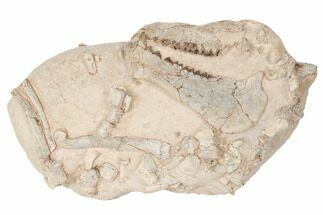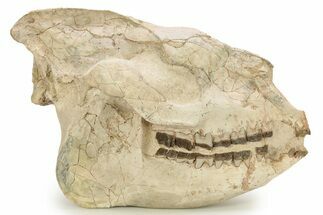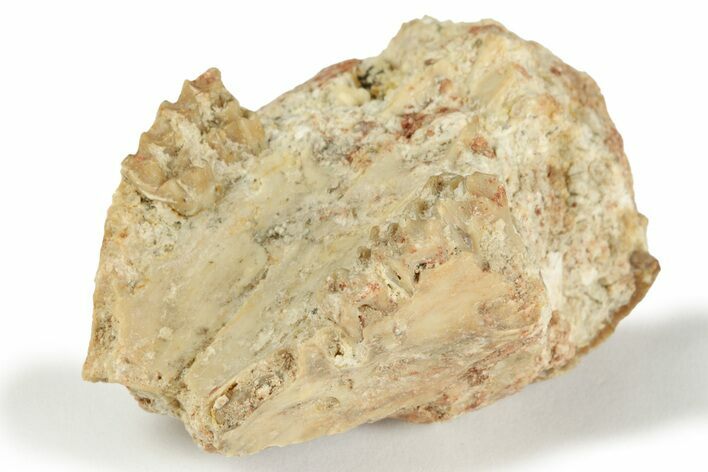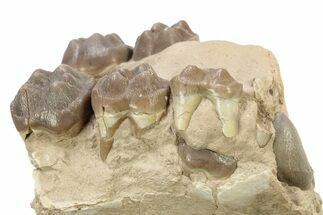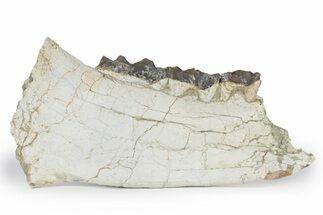This Specimen has been sold.
1.79" Fossil Early Ungulate (Caenomeryx) Skull - France
This is a 1.79" wide portion of the partial upper skull from an Oligocene ungulate (Caenomeryx). The bone contains 5 well-preserved teeth.
Caenomeryx was a genus of small herbivorous ungulate. They were in the artiodactyl family, related to modern camels, deer, and giraffes. In spite of this, Caenomeryxs' small size and limb morphology suggests that it moved more like extant rabbits, hopping along at high speeds. However, based on trace fossils attributed to the Cainotheriid family of which Caenomeryx belongs, most scientists now believe that their locomotion was similar to modern ruminants. They were small generalist herbivores, likely nibbling on anything leafy in their habitats.
The Artiodactyls are a group of mammals often called "even-toed" ungulates. They are called such because modern members of the group support their bodies on enhanced third and fourth digits (fingers), ending in hooves. Their first, second, and fifth digits are often reduced or nonexistent in modern species, however many extinct and fossil species retain five-toed feet. All artiodactyls, with the exception of whales and their ancestors, are herbivorous.
SPECIES
Caenomeryx procommunis
LOCATION
Lot (Formerly Quercy), France
FORMATION
Quercy Phosphorites Formation
SIZE
1.79" Wide
CATEGORY
ITEM
#218510
We guarantee the authenticity of all of our specimens.
 Reviews
Reviews

